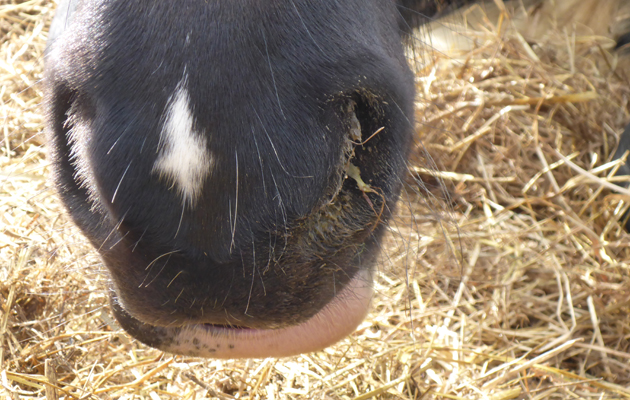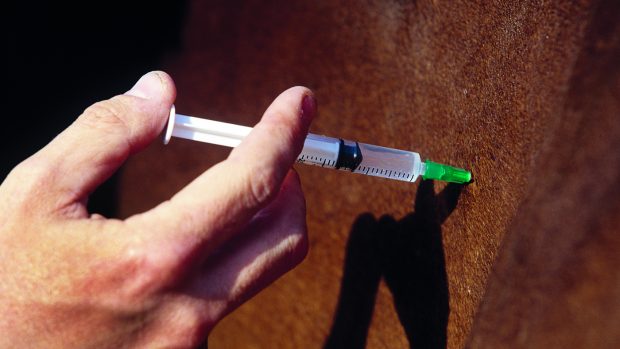An outbreak of equine herpes virus 1 (EV-1) and 4 (EV-4) has been confirmed in Chalfont St Giles in Buckinghamshire.
Vets Chiltern Equine Clinic published details of the outbreak on its Facebook page and said that biosecurity measures were in place.
This is the second outbreak of the virus reported in recent months.
In November, four horses were put down at a yard on the border of north Hertfordshire and south Bedfordshire following an outbreak of EV-1.
Chiltern vet Carmel Molloy said it could not be determined whether the outbreak in Chalfont St Giles is connected to the one on the border of north Hertfordshire and south Bedfordshire.
“It’s such a contagious disease it’s impossible to tell,” she told H&H.
Advice to owners
The practice offered advice to owners surrounding the disease.
“This is a very infectious virus which can cause respiratory disease, neurological disease and abortion in mares,” they said.
“If you have any questions regarding EHV, please don’t hesitate to get in touch. If you are concerned about your horse, particularly if he or she has a high temperature, please give us a call straight away.
“Risk of infection can be minimised with good biosecurity measures, ie avoiding close contact or sharing of water or feed buckets with other horses, particularly at competitions, and isolating new horses at livery yards. Known cases should be isolated.”
She added that yards should continue practising good biosecurity measures at all times.
“We should always be doing it all year round.”
The forms of equine herpes virus
There are five forms of equine herpes virus.
EHV-1 and EHV-4 are very common and almost every horse will have been exposed or infected at one time or another, according to Chiltern Equine Clinic.
“These strains of EHV are very common, and almost every horse will have been exposed or infected at one time or another,” they said.
“The most common signs are those of an upper respiratory tract infection. Depending on the infecting strain and the individual horse’s immune response, the severity can vary markedly from little or no clinical signs to a high temperature, lethargy, purulent nasal discharge and cough.
“The incubation period ranges from approximately 2-10 days.
“EHV can set up a latent infection, ie the virus remains in the horse after cessation of clinical signs, and can become reactivated at times of stress.
“The horse might not exhibit clinical signs during these periods but can spread EHV in oral and respiratory secretions.”
Equine herpes in pregnant mares
In pregnant mares, EHV-1 and EHV-4 can also cause abortion.
The abortion tends to occur in late pregnancy regardless of the time at which the mare became infected.
“If many mares on a stud are infected, particularly with EHV-1, we might therefore see ‘abortion storms’ in which many mares abort within a short period of time,” added the Chiltern spokesman.
“Clearly, the emotional and economic effects of this can be terrible.
“In rare cases, EHV can invade the nerve tissue of the spinal cord. The resulting inflammation causes weakness and ataxia (wobbliness) and can quickly progress to recumbency.
“Unfortunately, the majority of these neurological cases are fatal.
Related articles:
Treatment
“As EHV is a virus, we cannot kill it with antibiotics. Treatment involves supportive therapies such as anti-inflammatories, and administration of intravenous or oral fluids.
“Since EHV is so widespread within the horse population, it is very difficult to pin point the source of infection. There is a vaccine for EHV-1 and EHV-4, which can reduce the severity of clinical signs and reduce the shedding of the virus by infected horses, but does not give complete protection from infection.”
Chiltern Equine Clinic has produced a poster providing information regarding EHV and sensible biosecurity precautions.
To receive a copy of the poster by email please contact the clinic.
For more information visit: www.chilternequine.com





